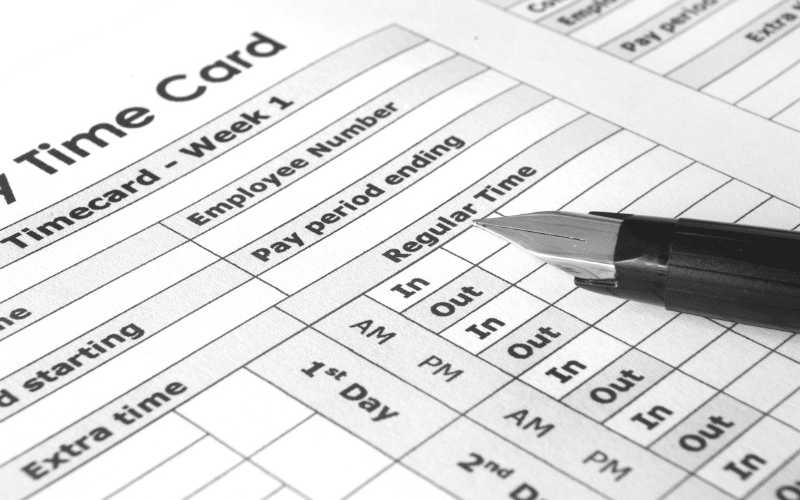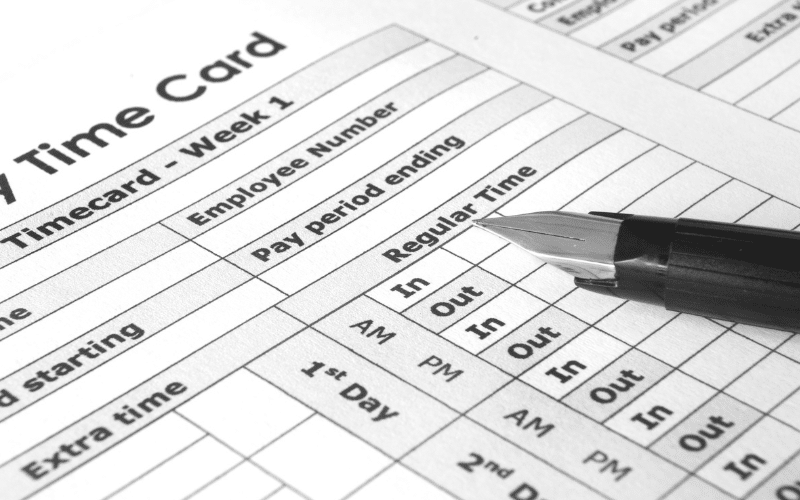How to Integrate Payroll and Timekeeping
January 27th, 2023 | 5 min. read

When was the last time you stood in line with your coworkers, waiting to punch your card at the start of your shift? Maybe you were even a rule breaker and buddy punched for your coworker who was running late. We’re willing to bet it’s been quite a while, if ever. Timekeeping technology has come a long way!
However, whether you’re sticking to the physical clock like the good old days or keeping it all digital with timekeeping software, integrating your timekeeping data with your payroll doesn’t have to be difficult.
CSI Accounting & Payroll officially opened our payroll department in the 2000s, and we’ve seen many payroll technology advancements since then! When small business owners want to talk to us about timekeeping, they often ask:
- What is timekeeping, exactly?
- Why do timekeeping and payroll need to be integrated?
- What options does CSI’s payroll department offer for timekeeping?

What is Timekeeping?
Timekeeping can be relatively simple. It’s primarily used to keep track of your employees’ time worked, and you use this data to pay them accurately. It’s one of the miscellaneous factors that go into our payroll fee.
However, timekeeping can also be more complex. Below are some examples of this.
Salaried Employees
Timekeeping can be used for salaried employees in a few different ways. Let’s say a non-exempt salaried employee works overtime. You’ll need to know how many hours so you can pay them at the premium rate. Even if the employee is exempt from overtime, timekeeping can be used to track accrued vacation time, for example.
Tracking Different Pay Rates
Sometimes you may have employees who work different jobs or in different departments with different rates of pay. The same can be said for different shifts. Timekeeping can help track their pay based on the work they’re performing or the shift they’re working.
Tracking Billable Time vs. Working Hours
There are industry-specific exceptions for many things - timekeeping included! Maybe your industry works with billable time like law firms and service stations do. Keep in mind that billable time and working hours are different things and need to be tracked, especially when commissions are on the table!
Why Do Timekeeping and Payroll Need to Be Integrated?
Timekeeping and payroll are not always used together. Often, either small business owners or their administrative employees will manually transfer timekeeping data to their payroll software.
However, this can take quite a bit of time and puts you at a huge risk of human error. Even so, some clients at CSI choose to use a standalone timekeeping system and input their numbers into their payroll.
When you integrate your timekeeping data with your payroll software, the hours worked are automatically added up and transferred directly into your payroll software to create a faster, more accurate process. That’s the value of automated payroll processes.
What Timekeeping Options Does CSI Offer?
We offer a few timekeeping options at CSI Accounting & Payroll. Below are our current options - comprehensive and basic.
My Employer On the Go
This is our timekeeping solution that’s integrated with our payroll software. That’s why this is our recommended timekeeping solution; it’s extremely valuable to have one login and automatic integration.
Employees log into My Employer On the Go through a browser or the convenient mobile app to:
- Clock in and clock out
- View their timecard
- View their historical pay information
- Download W-2 statements
- Download earnings statements (pay stubs)
Employers log into Employer On the Go to:
- Review timecards
- Approve timecards
- Review and submit payroll
SwipeClock
This is an older option that we do not offer integrations for. It does, however, offer solutions for more complex timekeeping needs.
There is an employer login for you to maintain the account and view your employees’ timeclocks, and there is another login for employees to clock in and out and to view their timecards.
Integrate Your Timekeeping With a Professional Payroll Service
After all of the timekeeping technology advances over the past few decades, it’s easy to feel like you’re falling behind. You may not need all of the fancy gizmos and gadgets, but proper integration can save you loads of time and help you avoid errors.
Now that you know more about what timekeeping is, why integration matters, and the timekeeping options that CSI Accounting & Payroll offers, you may find yourself wanting to learn more. If so, schedule a free consultation with our experts by clicking the button below:
Not ready for a conversation yet? That’s okay! In the meantime, you can learn more about the difference between national payroll providers and local payroll firms.
Bret is the Chief Operating Officer at CSI Accounting & Payroll, a role he stepped into in 2024. He began his journey with CSI in 2007, starting in a marketing position and eventually becoming the Payroll Department Manager, where he played a key role in helping CSI's expansion and long-term success. His background in sales and management – along with a degree in Computer Networking and Certified Payroll Professional (CPP) title – continues to serve him well in a dynamic environment as he leads the way for our Minnesota office.
